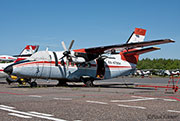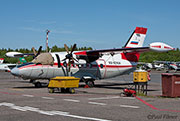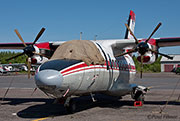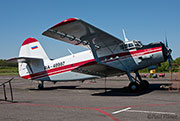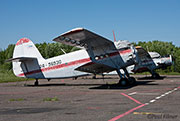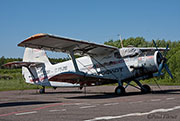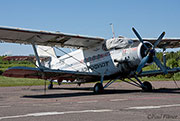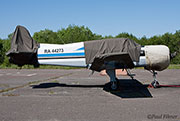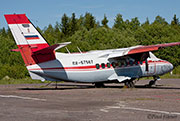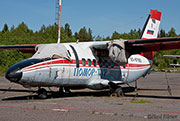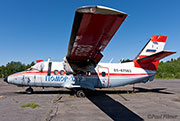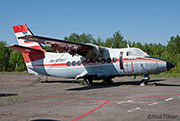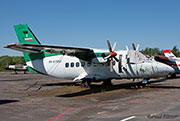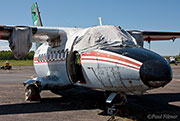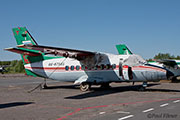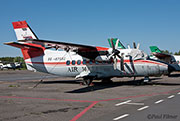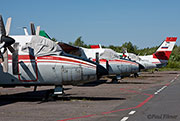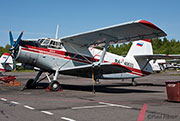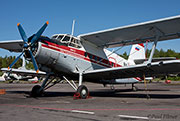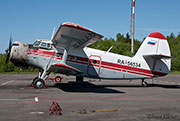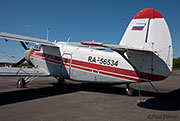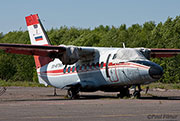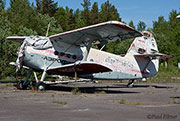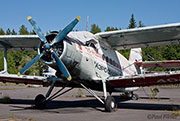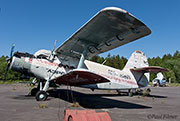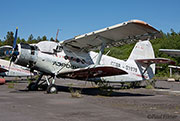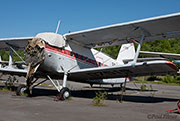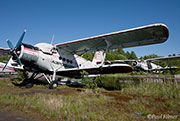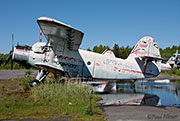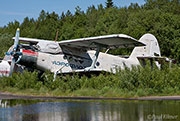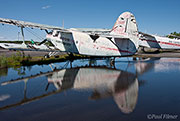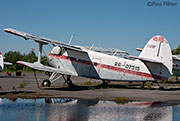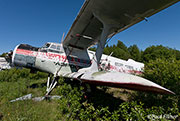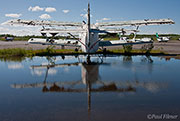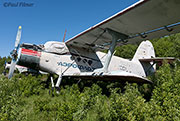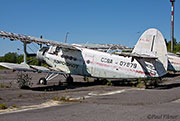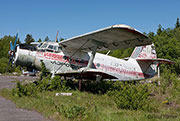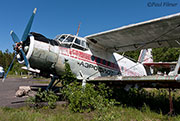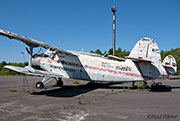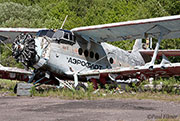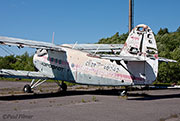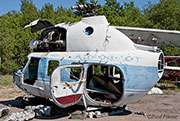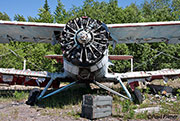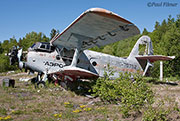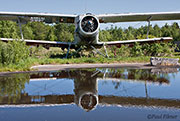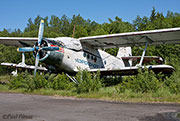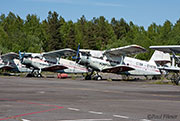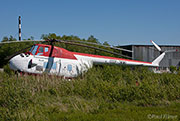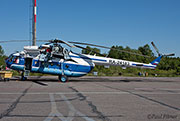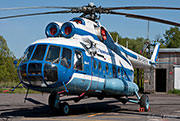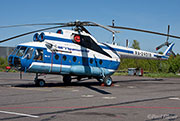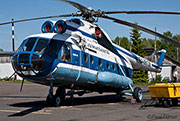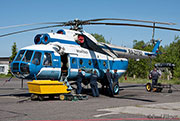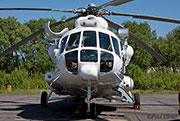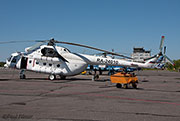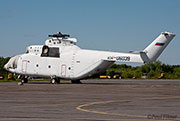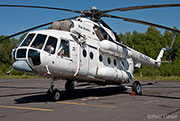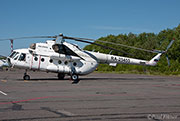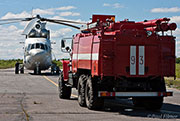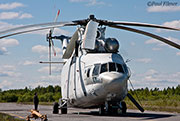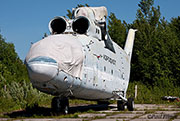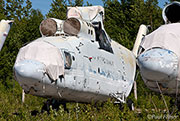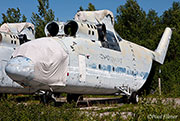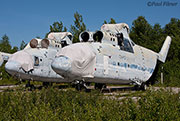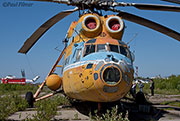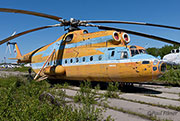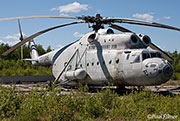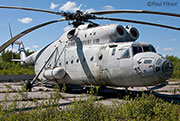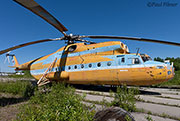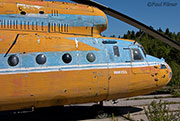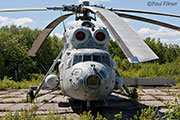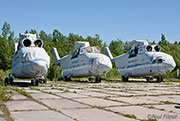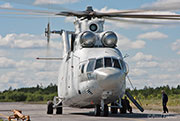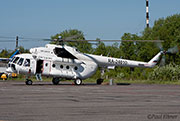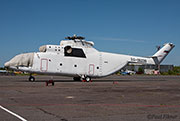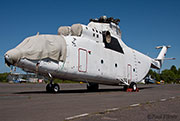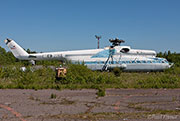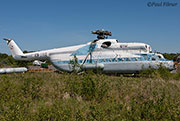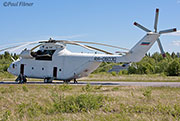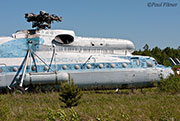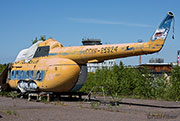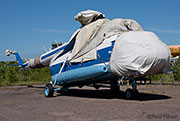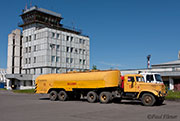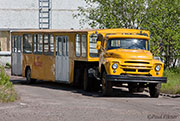After the excellent morning at Talagi which is the main airport in Arkhangelsk, the afternoon was to be a complete unknown as we were due to visit Vaskovo which is simply listed as a general aviation airport.
As far as we could tell no foreign visitors have ever been granted permission to visit this airfield and I could find no photos anywhere on the internet taken here, so yet again a complete unknown. We had no transport for this visit but that made a nice change as we would end up walking the length of the airfield. The old terminal building was our entry point and was on the north of the 13/31 configured runway and almost at the centre point. We had three people to keep us under control this time. Our main host was the aviation person who could answer questions, a security guy with a large hat and a man in a tailored suit and briefcase who uttered not a word the whole time. My guess is that he was the representative from the KGB.
Left or right out of the terminal? Left were helicopters and right were fixed wing. An executive decision by Steve to start on the right and off we went. Lots of Let L-410s and An-2s greeted us; surprisingly I have never seen many L-410s on my trips to Russia. Many of these L-410s were painted in the arctic Aeroflot colours but mostly without titles, as were lots of the An-2s. A few of the An-2s were in the basic arctic scheme with 2nd Arkhangelsk Aviation Enterprise titles and this airline provides services to the Solovetsky Islands which are to the east. They also use L-410s and I assume many of the aircraft here are also owned by them although none sported titles. This archipelago is made up of six islands and are designated as a UNESCO World Heritage Site due to the 15th century monastery that has repelled attacks over many centuries. The island was also used as a labour camp after the October Revolution in 1917. It was later known as the "mother of the GULAG" and hosted such notable prisoners as Gorsky, Popov and many others in Soviet history.
As we rounded the corner by the hangars it was revealed that we had only seen around half of the aircraft. There were An-2s everywhere but the further back along the lines you went, the worse for wear they looked. Still there were some interesting aircraft here that will certainly never fly again. Of course many of these were Aeroflot examples and most still carrying the CCCCP registration, meaning that they've been un-flyable a very long time. There was some waterlogged parts of the ramp near the rear so it seemed rude to try not to get some reflection shots. Right in the corner was a lonely Mi-2 cab in a light blue Aeroflot scheme.
After we had filled our boots this side of the ramp it was time to walk to the other end in the hot temperature. Half way there we passed a preserved Mi-4 surrounded by overgrown grass. As we walked towards the line-up of active Mi-8s my heart skipped a beat as I noticed a Mi-6 backlit against the sun. Having never seen one of these in the flesh before, I was a tad excited to say the least. First up were the Mi-8s to shoot though and all of these were again operated by the 2nd Arkhangelsk Aviation Enterprise and most were in a smart two-tone blue scheme, with a couple of others being plain white.
We had already spotted a Mi-26 rotor-less parked in the middle of the ramp and a further example with a fire truck parked at its nose. Perhaps they would run it? The former Mi-26 had small AMIS titles on the fuselage and the active one, once again, was marked as Arkhangelsk 2, which is just a shortened version of 2nd Arkhangelsk Aviation Enterprise, although it's not like they have a lack of room for the whole name on a Mi-26! Further out on a slightly more remote pan were a further three Mi-26s all engineless and carrying faded Aeroflot titles. We were told that eventually these would be fixed and made flyable much like the one that was already doing engine runs.
Also on this pan were another two examples of the mighty Mi-6. I know the Mi-26 is a very large helicopter, well actually the largest helicopter, but these are also very big when you get up close. First flown in 1957 this was in its time the largest helicopter in the world as well as holding the speed record for choppers. An interesting fact is that the massive gearbox is actually heavier than the engine it controls! All three that we saw are the Mi-6A model that was built originally for passenger duties with civilian operators, but these were most likely used in the freight role with Aeroflot. Interestingly all three were devoid of the large wings that were fitted to relieve the load on the rotor during cruise flight and that also adding 20% extra lift. This means they were most probably utilized later in their career for underslung load operations when taking off the wings became a common practice. What a great machine!
As we walked back the Mi-26 was running but shooting into the strong sun was an issue. The third Mi-6 was parked right into the sun so we asked of we could walk around to the sunny side. Not a problem of course. All three Mi-6 were in different schemes, one being yellow and light blue, one light gray and the last example in a three tone white, light blue and light grey Aeroflot scheme. All that was left to shoot were a couple of stored Mi-8s most likely used as spares ships.
After all the hard work and heat of the day it only seemed right to go back to the boardwalk next to the hotel and check out the beer and later the fluffy swings in the hotel bar later on. Yes 1960s fluffy swings, but that's a story for another day.
What a fantastic afternoon and our host seemed to know exactly what we wanted and was obviously an aviation person, as opposed to a security person that we are sometimes given as an guide. We assumed the day could not get better, how wrong would we be...
Next stop Vnukovo.
Subscribe to receive updates via: e-mail list | Facebook | Instragram | Twitter
[photo/serial list]
